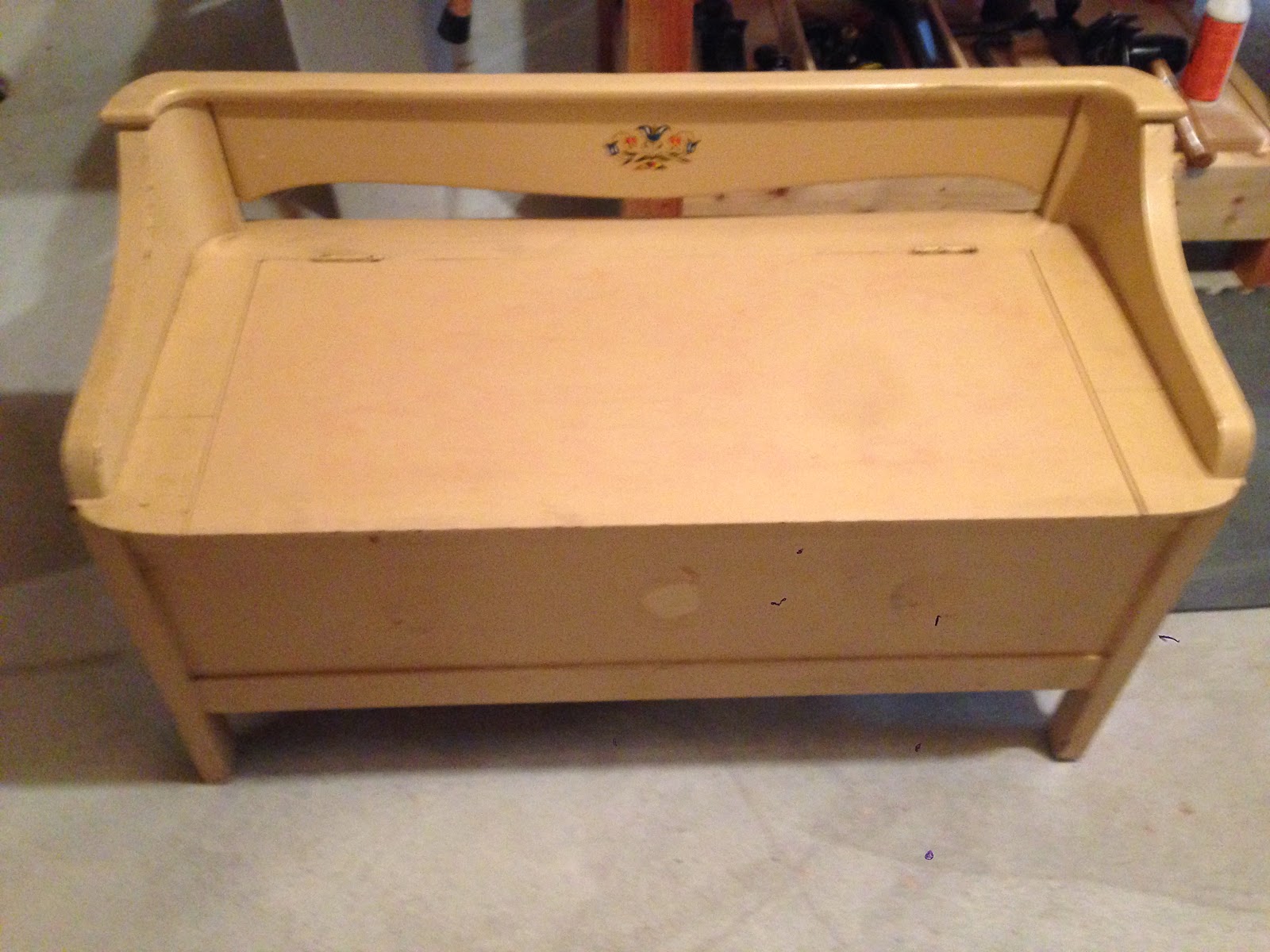I recently took a detour from my woodworking projects and refinished a storage bench. My wife picked this up not long after we moved in to the house last winter with the hopes that I would repaint it. This honey-do item was bumped to the top of the list a few weeks ago and while not really a wood chip making or joinery cutting type project, it gave me an opportunity to try out milk paint which will most likely be a finish of choice on a future piece.
 |
| Antique store find |
The existing latex paint had a few large chips and dings of which a new coat of paint would not have hidden, so I opted to strip. I have used Citristrip in the past with good results and used it again for this. I like it because I can use it in my basement with the windows closed and not worry about melting flesh or charring lungs. I still use gloves though because the process is a nasty, messy chore that I swear I will never do again, every time.
 |
| Citristrip... in case you were hoping for a picture |
 |
| The paint on the lid started to melt while brushing the stripper on |
 |
| The paint is pretty loose after 30 mins |
 |
| Nasty |
 |
| I ended up throwing this bowl away |
Removing the old paint revealed that the entire piece, except for the back panel, was made entirely of highly figured, quarter sawn oak. If you are in the small, yet obviously intelligent and successful group of readers of this blog, then you'll no doubt remember
my rant about QSWO. A dilemma indeed.
 |
| Uh oh, quarter sawn oak |
 |
| Holy figure |
 |
| It's everywhere |
When my wife saw it, she wondered if we shouldn't paint it. I went back and forth on covering up this prized (by most) wood, but after completely cleaning off the paint and scum, it just didn't look right. Too dark, or something, we couldn't put a finger on. Just, not right.
One other surprise that was revealed was the curious use of a secondary wood embedded in the lid. It is almost like plywood. You can see in this picture that the lid is made of a glued up, solid panel with a secondary wood inserted in between. Is this a method of protecting against wood movement? Is this necessary with quarter sawn wood?
 |
| An old method of making plywood? |
Milk paint turned out to be a good compromise since the wood grain is still visible even after a couple of coats. We decided on barn red and bought a small package of
Old Fashioned Milk Paint. It came with clear instructions for mixing that I couldn't be bothered with.
I set to adding water to powder until I got a a consistency that would easily filter through a pair of old pantyhose. The result was a thin paint, closer to a stain, that dripped from a foam brush when pressed like you would expect water to. The first coat looked like I had made a mistake, but all of the reading I had done warned me about this this.
After it dried I rubbed it with 0000 steel wool and then put on a second coat, followed again by a steel wool massage. Before rubbing, the paint felt gritty and quite dry. Not even close to what the flattest latex paint feels like. Rubbing knocked off all the grit and left a smooth, wood textured feel.
 |
| Two coats of barn red milk paint |
A couple coats of Danish oil made the grain and figure even more visible.
 |
| The figure shines through after coating with Danish oil |
 |
| The grain is visible too |
The end result is exactly what I had hoped for and my wife is pretty happy too. So are the boys who have some place to sit again when putting on their shoes.
Thanks for reading.
Jim














No comments:
Post a Comment